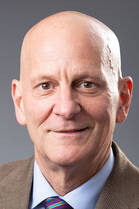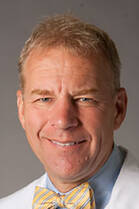Lead researchers
This research was led by:
Why did we do this research?
A big problem for patients undergoing lumpectomy for breast cancer is that about 25% of the time, there is cancer left at the edge of the lumpectomy tissue after surgery, requiring repeat surgery to completely remove the cancer.
What did the research involve?
Drs. Barth and Paulsen invented a 3D-printed form called the Breast Cancer Locator™ (BCL), which is made using MRI images of the breast taken before surgery. The BCL is placed on the breast at the start of surgery and allows the surgeon to place wires in the breast to localize the edges of the cancer. An interactive 3D image of the cancer in the breast is also provided to the surgeon to help guide precise tumor removal.
What did we learn?
The BCL and 3D images have been used to help surgeons doing lumpectomies. We have the following results from 30 patients:
- The edges of removed tissue were cancer-free in all patients.
- Surgeons were able to precisely remove the cancer.
- The process was safe, efficient, and reduced pain for patients.
- Surgeons easily learned how to use the BCL.
- Healthcare costs were reduced by making additional surgeries unnecessary and by freeing up hospital staff time.
Why is this important?
Being able to remove all the cancer during one surgery is a win for everyone: patients get a better cosmetic result with fewer surgeries and more confidence in the surgical process, surgeons have more time to help more patients, and hospitals benefit from reduced costs.
To learn more about this research
Please refer to the Breast Cancer Locator Guided vs. Wire Localized Partial Mastectomy for Breast Cancer web page on ClinicalTrials.gov to learn more about an ongoing clinical trial using the BCL.
Funding acknowledgement
This research was made possible with funding from the National Cancer Institute, the Small Business Innovation Research program, and a local community philanthropist.
Special thanks
We want to thank our Community Research Ambassadors David and Jen for partnering with us to develop the video and content for this page. Thanks, David and Jen!

